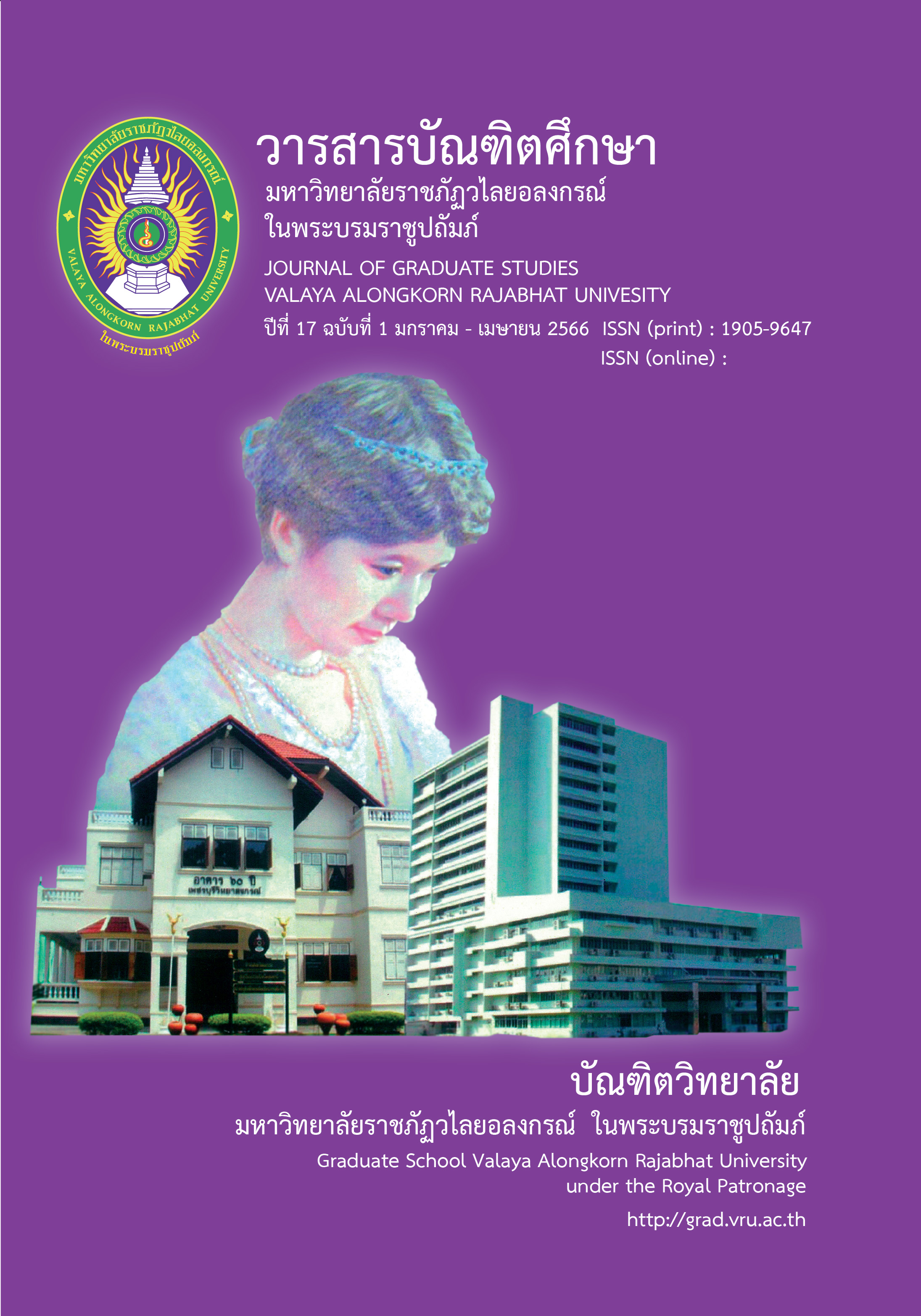THE CREATIVE THAI DANCE TITLED “PAKUL”
Main Article Content
Abstract
The creative Thai dance titled “Pakul” was the qualitative research in the form of creative study and aimed to (1) study the background and the belief of the strewing of Pikhul Ngern & Pikhul Thong (artificial flowers) in the Royal Coronation, (2) creatively create the Thai dance performance titled “Pakul” and (3) teach the dancing movements to the bachelor’s degree students (only Freshman, Sophomore and Junior students) who had been studied in the major of Thai Classical Dance Education from the Faculty of Fine and Applied Arts, Rajamangala University of Technology Thanyaburi. The research tool was the structured interviews. By using the data obtained to analyze in order to find patterns in the creation of the show
The study found that (1) Pikhul tree was a kind of sacred trees in the Indra’s garden, so, the Pikhul’s flower represented of the heaven flower. According to the Royal Coronation, Pikhul flowers were made from gold and silver for the King to strew down during the ceremony. (2) The creative Thai dance named “Pakhul” was divided into 2 parts; the 1st part was interpreting to the belief of the Pikhul tree that was one of the divined trees found in Indra’s garden and its flowers were called as heaven flowers, the 2nd part was to convey about the belief toward Pikhul flowers, Thais believed that Pikhul flowers represented the wealthiness, abundance and success. And (3) The researchers adapted the Thorndike’s learning theory to teach the dancing movements to the bachelor’s degree students (Only Freshman, Sophomore and Junior Students) from Thai Classical Dance Education, the Faculty of Fine and Applied Arts, Rajamangala University of Technology Thanyaburi.
Article Details

This work is licensed under a Creative Commons Attribution-NonCommercial-NoDerivatives 4.0 International License.
บทความทุกเรื่องได้รับการตรวจความถูกต้องทางวิชาการโดยผู้ทรงคุณวุฒิ ทรรศนะและข้อคิดเห็นในบทความ Journal of Global of Perspectives in Humanities and Social Sciences (J-GPHSS) มิใช่เป็นทรรศนะและความคิดของผู้จัดทำจึงมิใช่ความรับผิดชอบของบัณฑิตวิทยาลัย มหาวิทยาลัยราชภัฏวไลยอลงกรณ์ ในพระบรมราชูปถัมภ์ กองบรรณาธิการไม่สงวนสิทธิ์การคัดลอก แต่ให้อ้างอิงแหล่งที่มา
References
Natayakul, S. (2006). Visual lighting management for the art performance. Mahasarakham: Mahasarakham University Press.
Rajani, B. (1999). Phra racha pi tee borom racha pisek. Bangkok: Compact Print Publishing.
Rangsibrahmakul, C. (2020, January 5). Interview by P. Papada. The Royal provost, Department of Royal Ceremony, Bureau of the Royal Household; BRH.
Rangsibrahmakul, S. (2020, January 30). Interview by P. Papada. The Royal Brahman, Department of Royal Ceremony, Bureau of the Royal Household; BRH.
Rieab Rieng, T. (2006). Pi tee kam lae kwam cheu thong tin. Bangkok: Saengdao Publishing.
Virulrak, S. (2000). Natasilp paritas. Bangkok: Bangkok Printing, Thai Dance Education, Faculty of Fine and Applied Arts, Chulalongkorn University.
Wonganutrarot, P. (2008). Educational psychology. Bangkok: Bangkok Publishing, Seu Serm Krung Thep Center.


